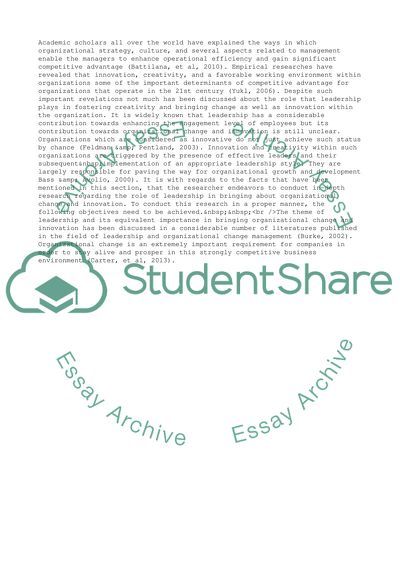Cite this document
(The Role of Leadership in Bringing Organizational Change And Research Proposal Example | Topics and Well Written Essays - 1750 words, n.d.)
The Role of Leadership in Bringing Organizational Change And Research Proposal Example | Topics and Well Written Essays - 1750 words. https://studentshare.org/business/1844904-proposal
The Role of Leadership in Bringing Organizational Change And Research Proposal Example | Topics and Well Written Essays - 1750 words. https://studentshare.org/business/1844904-proposal
(The Role of Leadership in Bringing Organizational Change And Research Proposal Example | Topics and Well Written Essays - 1750 Words)
The Role of Leadership in Bringing Organizational Change And Research Proposal Example | Topics and Well Written Essays - 1750 Words. https://studentshare.org/business/1844904-proposal.
The Role of Leadership in Bringing Organizational Change And Research Proposal Example | Topics and Well Written Essays - 1750 Words. https://studentshare.org/business/1844904-proposal.
“The Role of Leadership in Bringing Organizational Change And Research Proposal Example | Topics and Well Written Essays - 1750 Words”. https://studentshare.org/business/1844904-proposal.


